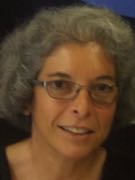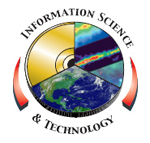
Please Note: The content on this page is not maintained after the colloquium event is completed. As such, some links may no longer be functional.
Amy Braverman
Data Fusion and Spatial Inference for Remote Sensing
Wednesday, April 1, 2015
Building 3 Auditorium - 11:00 AM
(Coffee and cookies at 10:30 AM)
Remote sensing data are inherently spatial, and a substantial portion of their value for scientific analyses derives from the information they can provide about spatially dependent physical processes. However, no instrument observes everywhere all the time, and even where they do observe, their data have gaps and errors. Scientific inferences about the processes of interest can be improved if gaps can be filled and errors accounted for in the form of probabilistic uncertainties that can be propagated forward through subsequent analyses. In this talk I will discuss Spatio-Temporal Data Fusion (STDF) in this context. That is, the objective of data fusion is to combine data from multiple remote sensing instruments in order to provide a single best-estimate data set, with uncertainties attached to every datum so derived. The input data sets can have different coverages, footprint sizes, shapes, and orientations, and error characteristics. STDF capitalizes on the differing strengths of heterogenous data sources in order to drive uncertainty to a minimum, and exploit the synergy of complementary observations. In some cases, this may even allow us to construct new data products that estimate quantities that are not directly observed by any remote sensing instrument. I will illustrate with some results from our fusion of carbon dioxide data from sources such as AIRS, OCO-2, and Japan's GOSAT.
Dr. Amy Braverman is Principal Statistician at NASA's Jet Propulsion Laboratory. She holds a Ph.D. in Statistics and an M.A. in Mathematics, both from UCLA, and a B.A. in Economics from Swarthmore College. At JPL she develops new statistical methods for analyzing massive data sets used in Earth and climate science. Her areas of interest include uncertainty quantification, information-theoretic approaches to data reduction for massive data sets, statistical evaluation of climate models, data fusion, and data analysis in distributed environments. Dr. Braverman is a member of JPL's Center for Data Science and Technology, and of three Earth-observing mission teams. She has organized numerous professional conferences and sessions devoted to bringing modern statistical methods and practices to Earth and climate science, and to stimulating interest among statisticians in providing practical solutions to data problems arising in those domains. Dr. Braverman is a Fellow of the American Statistical Association, and holds memberships in the Society for Industrial and Applied Mathematics, and the American Geophysical Union.
IS&T Colloquium Committee Host: Karen Moe
Sign language interpreter upon request: 301-286-7040
